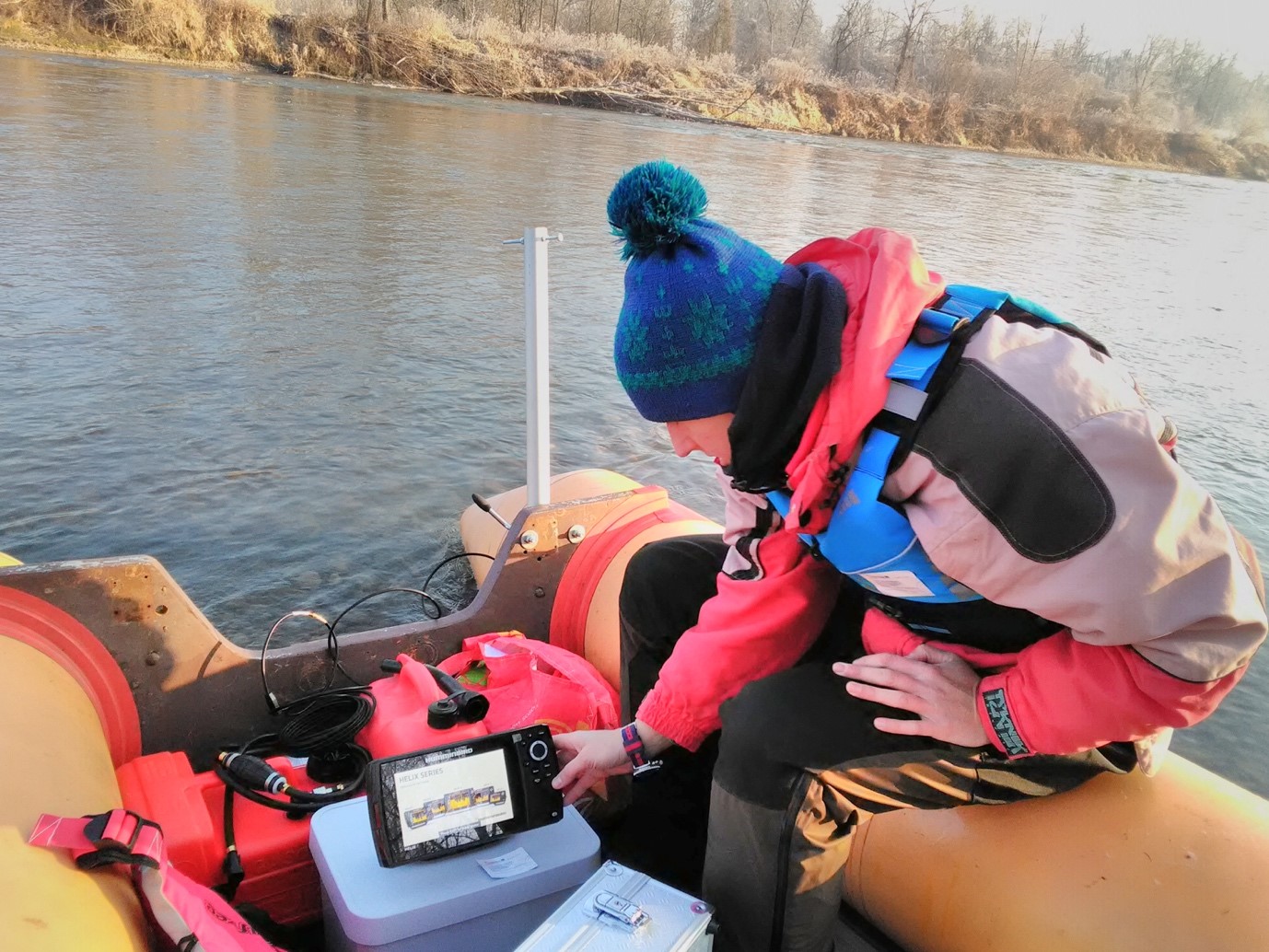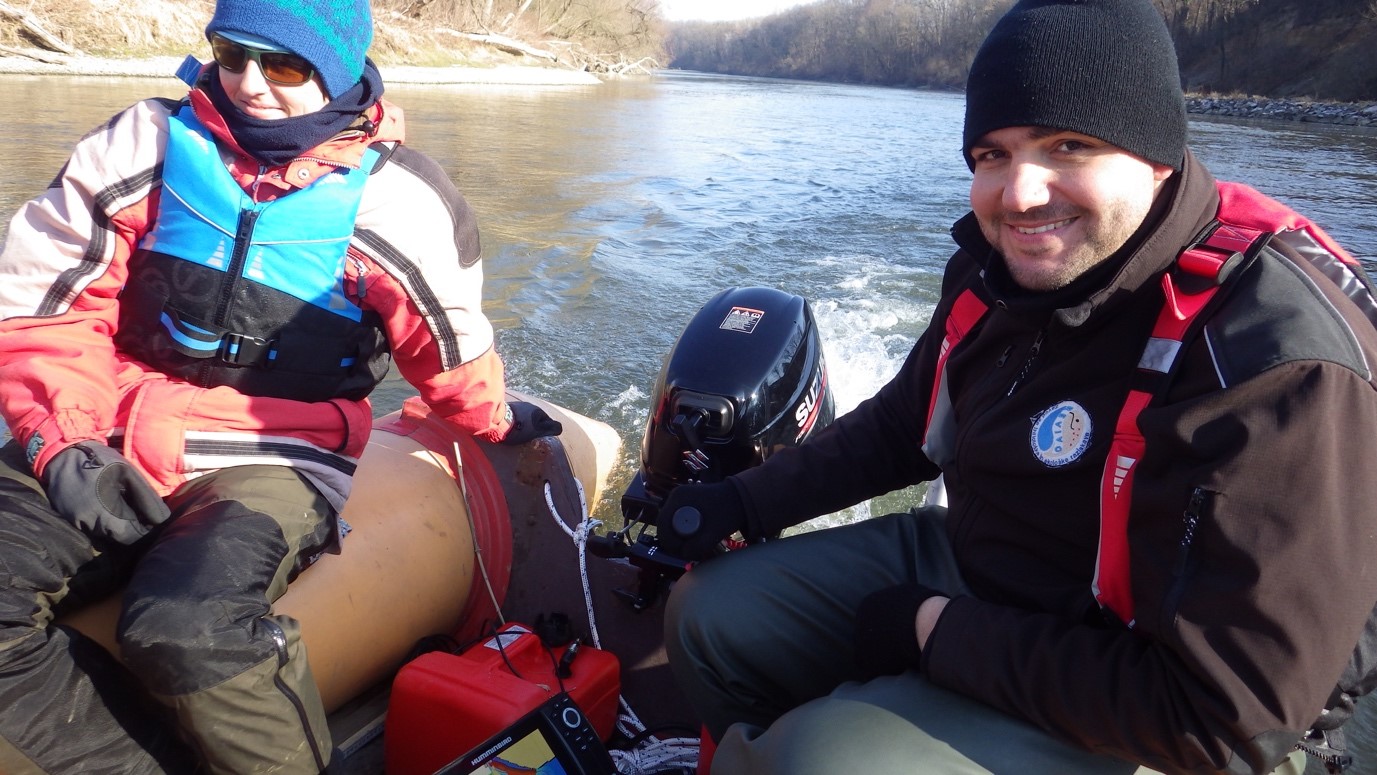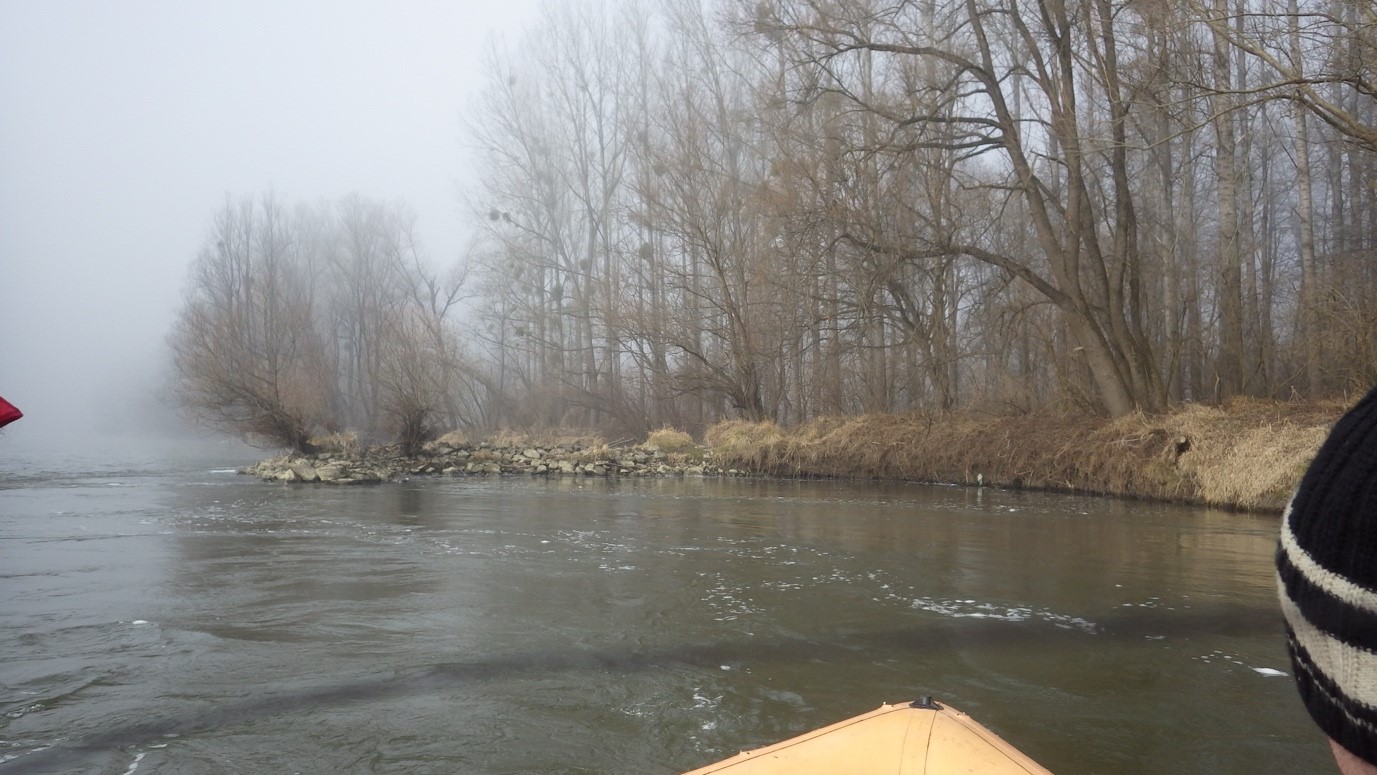MEASURES - Field survey of potential wintering habitats on Mura river
14-02-2019
This week, Institute REVIVO team started the field work activities for MEASURES project in the upper part of the Mura river in Slovenia. We’re mapping potential wintering habitats for sterlet (Acipenser ruthenus), nase (Chondrostoma nasus), barbel (Barbus barbus), vimba (Vimba vimba) and cactus roach (Rutilus virgo).
Potential wintering habitats were first determined using Google Earth and now we are following up with a field campaign, measuring depth and size of the pools, checking the substrate and monitoring morphological characteristics of the channel to see the quality of habitat at each of the chosen locations.
During mapping of the potential habitats from the DOI we first noticed and it became even more evident during our field sampling, that the regulations along most of the Mura river in Slovenia are preventing creation and/or maintenance of habitats for migratory fish species. The erosion protection efficiently prevents natural morphogenic processes, resulting in a completely uniform river bad. Downstream of the Veržej the riverbed slowly developed some heterogenity, the most interesting habitats for us being the deeper and larger pools where we could expect to find the last remaining sterlets in Slovenia.

Scanning riverbed with sonar is a crucial part of our methodology because it gives us a precis 3D picture of pools. (c) Institute REVIVO

With a skillful boat driver work can be done quickly and efficiently – with a bit of rest among two points. (c) Institute REVIVO

Smaller possible wintering habitats for sterlet, barbel, cactus roach and nase, with water depths over 2 m. (c) Institute REVIVO

Wintering habitats important for migratory fish species were scanned with sonar. (c) Institute REVIVO

A mysterious nebula on Mura river. (c) Institute REVIVO
In the following weeks we will select the best potential wintering habitats for the target species by analyzing the results of the habitat mapping and check those sites using different sampling techniques. We will focus especially on sterlet which has not been recorded in the Mura river since 2000. Follow us in our journey!
